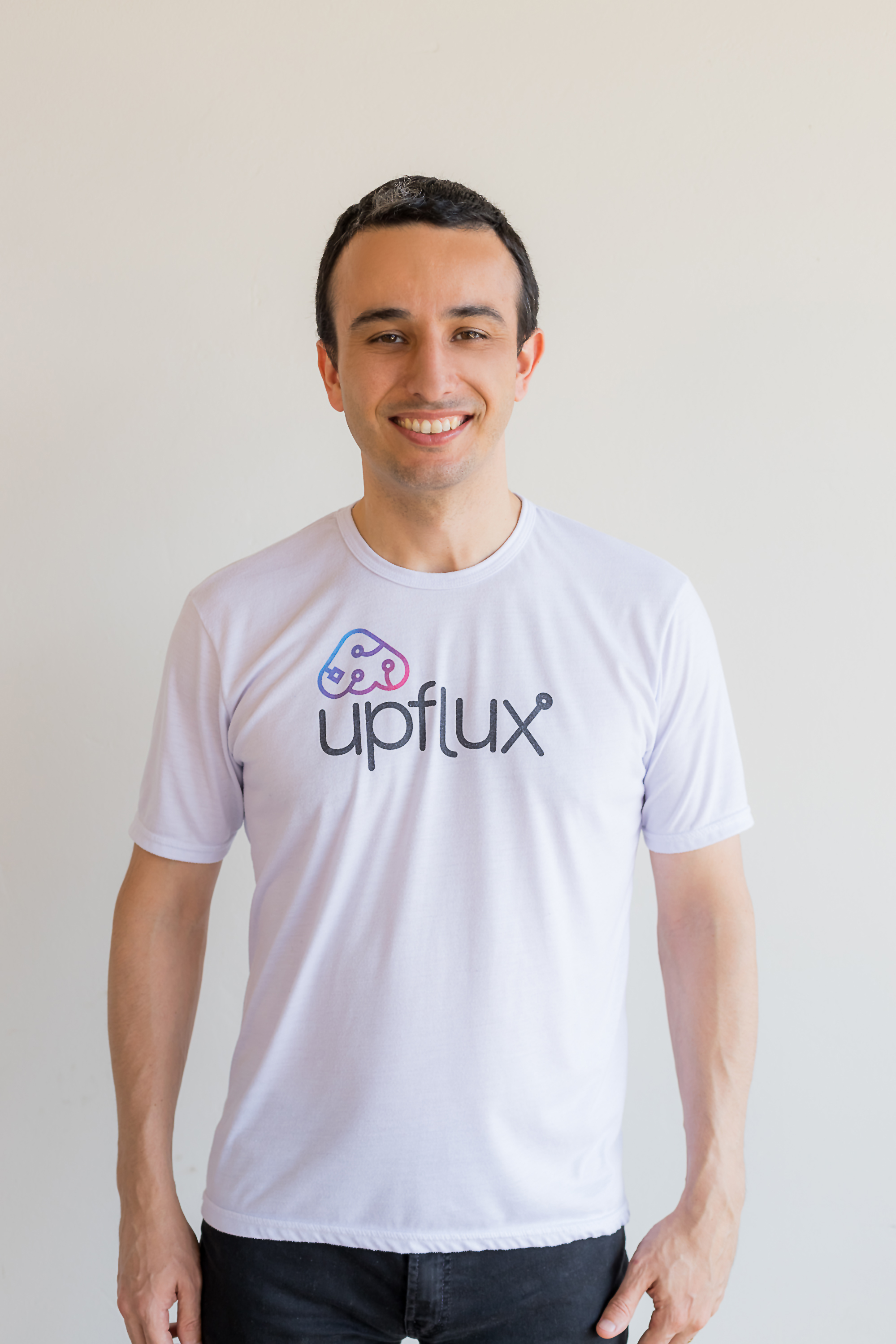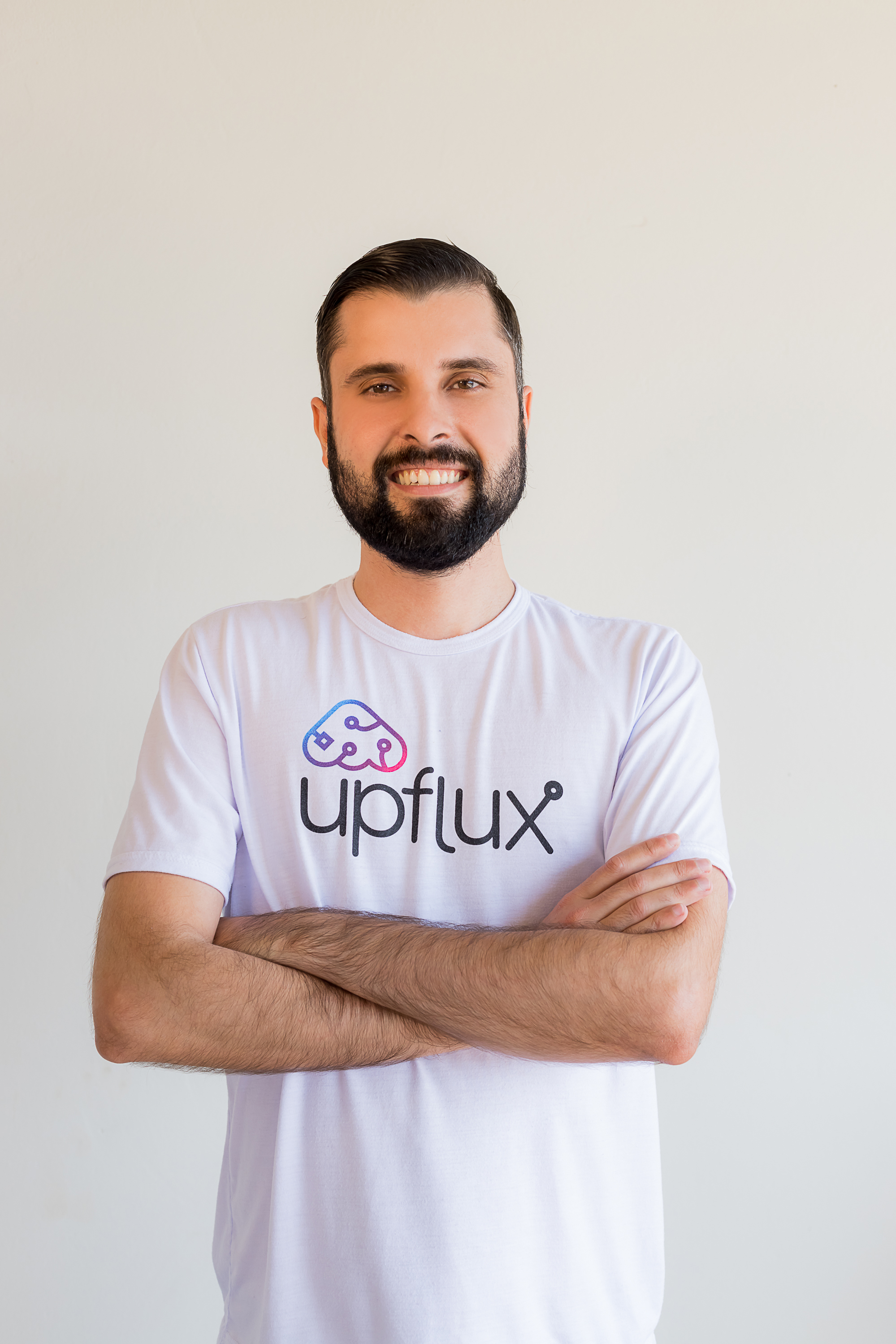Developer’s point: UpFlux
developers point end-users cornerA chat with Cleiton Garcia
 Cleiton Garcia (in the picture to the left) is the CPTO and Co-Founder of UpFlux, a rapidly growing company in the area of process mining with a large knowledge base in the healthcare sector and the Latin American area gained over the years. We talk with him about the creation of the company, the gained experience along this journey, and visions on process mining.
Cleiton Garcia (in the picture to the left) is the CPTO and Co-Founder of UpFlux, a rapidly growing company in the area of process mining with a large knowledge base in the healthcare sector and the Latin American area gained over the years. We talk with him about the creation of the company, the gained experience along this journey, and visions on process mining.
Where and when did you first hear about process mining?
My first contact with process mining was at Pontificia Catholic University of Paraná, in the post-graduation program. We were advised by a professor of nonparametric statistics to explore process mining for applications in industry, as we were looking for maintenance optimization for renewable energy. I was very intrigued by process mining and how it was capable of delivering value. This was back in early 2015, when I was pursuing my doctorate and my friend Alex Meincheim (in the picture to the right) was pursuing his master's. At the same time, we were working at a large electric equipment company. I led projects for the digitalization of product lines, and Alex worked with me. Then we usually spent many hours together in the car, traveling from Jaraguá do Sul – Santa Catarina to Curitiba – Paraná. These journeys provided valuable time for us to discuss our visions. As I had previous experience working with product lines and process lines to automate the building of new instances, it was very clear this gap was filled by process mining. I was very excited to work with it. Back then, I had the opportunity to participate in process improvement projects, ERP implementations, and the development of several systems. We could realize many process mining applications, including Six Sigma projects and enhancements to existing systems like manufacturing execution systems, fleet management systems, and process management systems. The potential of process mining to deliver real value excited me immensely.
How was UpFlux born?
 UpFlux was conceived during our post-graduation research, where we initially focused on developing a framework for process mining. Then, we started looking for connections with other research groups that were interested in process mining to engage them in using our tool. Some of those groups were already working with process mining. We needed users to improve our framework and the usability of the tool.
UpFlux was conceived during our post-graduation research, where we initially focused on developing a framework for process mining. Then, we started looking for connections with other research groups that were interested in process mining to engage them in using our tool. Some of those groups were already working with process mining. We needed users to improve our framework and the usability of the tool.
Then, we started to connect with Professors in diverse fields, including Production Engineering, Health Sciences, and Computer Science, of course, as that was the area of our supervisor, Prof. Edson Scalabrin. Initially, we promoted some meetings to share efforts for publishing a literature review paper on the applications of process mining. In one of these meetings, we were introduced to Marcelo Dallagassa, a student from the Health Sciences Program.
This connection quickly evolved into exploring new avenues for applying our framework, especially in the healthcare sector. We began by developing specialized capabilities for health insurance applications focused on auditing medical bills. Later, the application was extended to patient pathways. Our first customer was a medical cooperative that stands as the largest of its kind globally, boasting over 105,000 affiliated physicians and more than 15 million health insurance subscribers. This journey not only inspired us to transform our academic work into a scalable enterprise, but it also empowered us to take control of the company's direction.
What were your greatest challenges when moving from an idea to a software company?
The execution phase is key. After closing the first project, you need not only to deliver it but also to focus on how to replicate it. The first courageous person to resign from the company he worked for and focus 100% on UpFlux was Alex (who is now CEO at UpFlux!). It took him one year and ten months to be sure of the decision, as great opportunities were also coming up with the new unit opening there. During that period, though, we also brought Gilberto in to help us with development at UpFlux; he is now a manager and our partner.
Some challenges are common for basically every software company, yet this aspect does not make it easier to handle them — for example, to engage great talents. Like in every startup, perpetuating the culture and evolving the leadership is a major challenge, too.
What is the major challenge while using process mining for you?
To acquire new customers, the challenge lies in educating them about the transformative potential of process mining for doing things differently. While the benefits of process mining may seem obvious to us, they are not always immediately clear to customers. A common hurdle in implementing process mining is ensuring data quality for tasks like process discovery and conformance checking.
For customer retention and expansion, another challenge in the realm of process mining is to prepare 'customer champions' or focal points to support continuous process improvement. It is crucial to take incremental actions for improvement to make measurable progress day by day.
UpFlux is mainly active in the Latin American market. Do you see any difference between this and other markets such as Europe and North America (e.g., regarding specific industries, types of analysis, business demand)?
In LATAM, we tend to be more flexible and open to customer requirements, often customizing solutions to fit specific needs. This leads to a higher degree of process variability, which I believe is more pronounced than in Europe or North America. Interestingly, UpFlux initially emerged in the healthcare sector, where the variability of processes is even greater. In healthcare, we can filter processes by each type of disease and each kind of treatment, but this also results in numerous process variants.
In addition to being in a region that is more amenable to customization, UpFlux has its roots in a business segment that demands highly tailored solutions. In healthcare, each patient pathway is adapted to doctor recommendations and individual patient needs and choices. This experience has prepared us well for managing high levels of customization and process variability.
What was your “ah-ha” moment while using process mining?
For IT, I believe that it is the discovery algorithm. For example, imagine the C level showing the amount of money a company is losing. A proof of value showing all opportunities contextualized with data evidence is great for finding an explanation. Sometimes, the customers try to confirm that a process failure is nonexistent, so they are not really in for the surprise that is awaiting. I tend to cherish this part of human reaction: they usually remain astonished, feeling that it couldn’t really be happening, and their jaws drop.
Many corporations do have departments dedicated to continuous process improvement or quality control, but these often focus only on a small portion of the 'happy path' — an idealized audit. These traditional departments may engage in periodic projects, perhaps once a year or every two years, aimed at improving processes. However, achieving genuine, continuous process improvement and maintaining real-time process control can be extremely labor-intensive without the aid of process mining. Process mining technology offers the ability to continuously monitor, analyze, and improve processes by leveraging data. These opportunities enable organizations to move beyond periodic, isolated improvement projects and instead foster a culture of ongoing optimization. The insights gained from process mining can be used to identify bottlenecks, uncover variations, and recommend actionable steps for improvement, making the task of continuous process improvement far more manageable and effective.
How do you see process mining three years from now?
In three years from now, I envision process mining becoming an integral part of business operations; it will be present globally. As technology continues to advance, process mining tools will likely become more sophisticated, offering even deeper insights into complex processes, and enabling more effective optimizations. Let me comment on some ideas for process mining improvement:
- Process expertise based on Large Language Models: Fully integrated with generative AI, a process expert could talk with managers, supporting daily analysis and execution.
- Integration with Machine Learning: Process mining with ML will support root cause analysis, detect anomalies, propose new decisions, and explain conformance-checking rules.
- Focus on real-time: Process mining technologies should allow businesses to react more quickly to inefficiencies and bottlenecks as they arise.
- Pre-packages: Deploying and activating process mining tools in a few minutes using app stores should be doable for many systems, not only for the biggest ERPs.
- Increased adoption: With the support of process mining, we will shift from traditional process improvement methods to data-driven continuous improvement.
- This article has been updated on October 21 2023, 00:18.
- A chat with Cleiton Garcia

